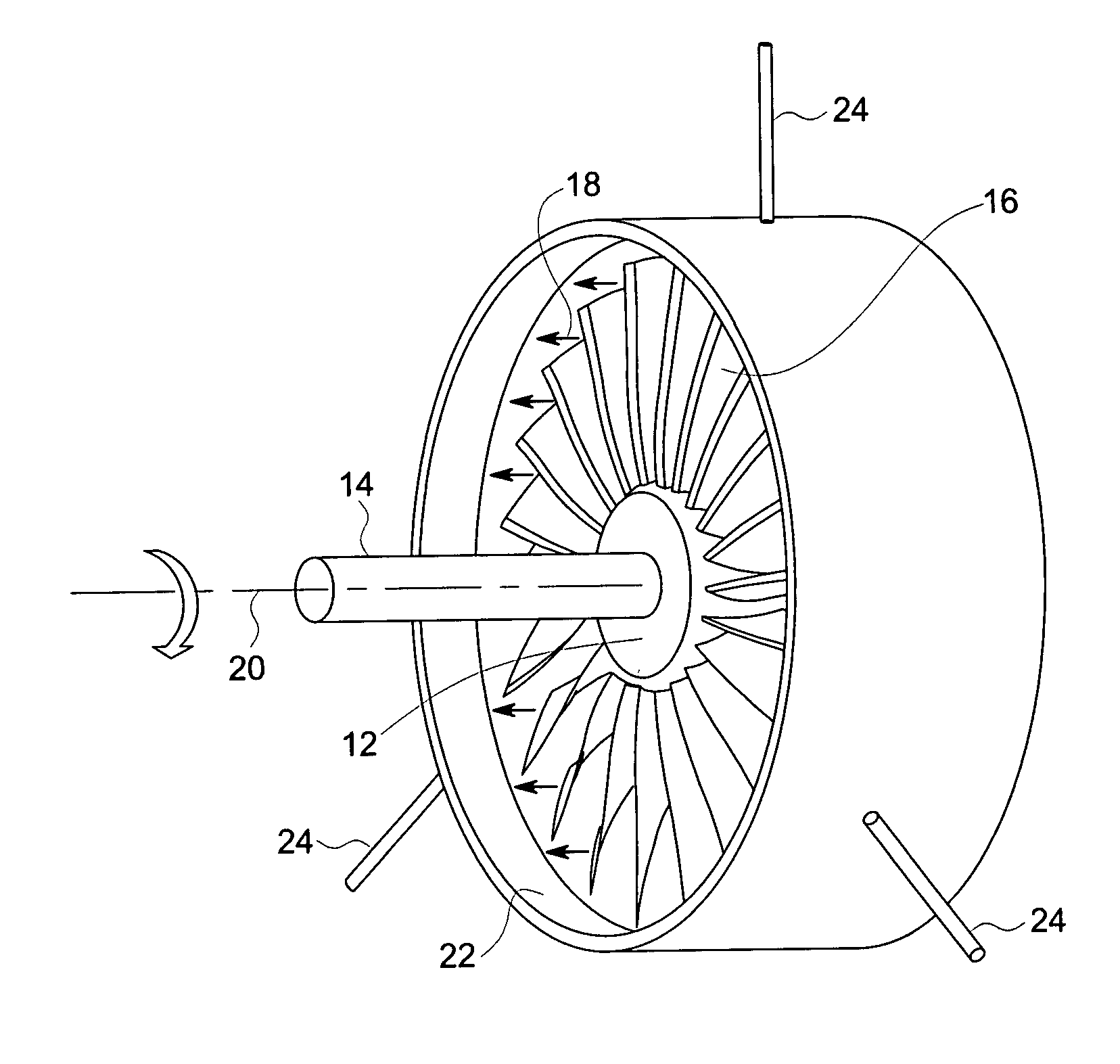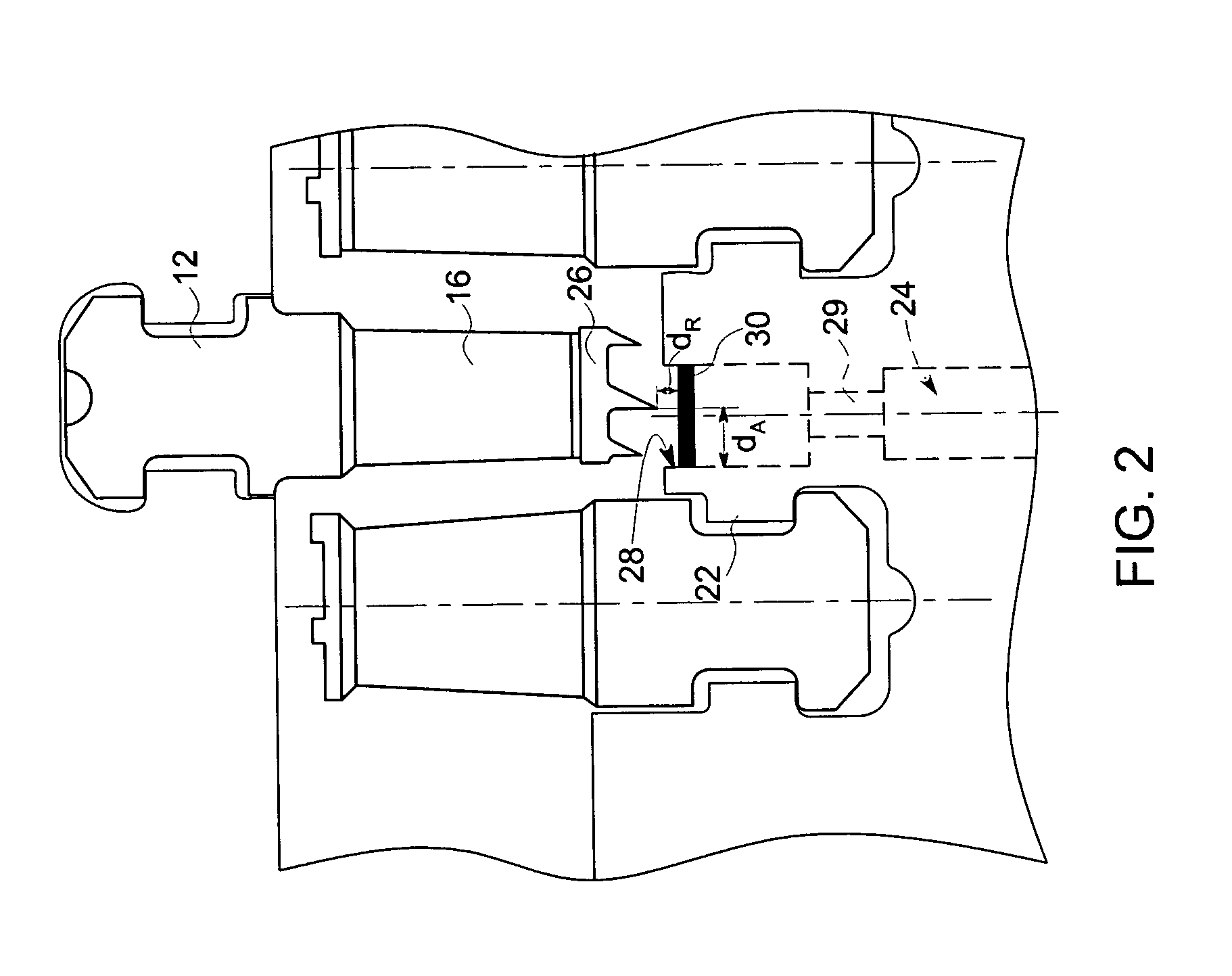Displacement sensor system and method of operation
a sensor and displacement technology, applied in the field of sensors, can solve the problems of increasing engine cold start-up time, reducing the work efficiency of the turbine stage, and affecting the stability of the stationary shroud,
- Summary
- Abstract
- Description
- Claims
- Application Information
AI Technical Summary
Problems solved by technology
Method used
Image
Examples
Embodiment Construction
[0021] The following description presents a novel technique for measuring axial displacements as well as radial clearances between rotating and stationary components in a rotating machine. For example, the present technique may find application in a steam turbine to measure radial and axial displacements of the rotating blades or the seal teeth with respect to the surrounding stationary shroud. In one embodiment of the present technique, radial and axial displacements are sensed by measuring a capacitance between the tips of the rotating blades or seal teeth and one or more sensors disposed on the shroud. The displacements thus measured may then be incorporated into a control strategy to insure that that there is no rub or interference due to thermal growth in both radial and axial directions between the rotating and static parts during operation of the turbine. Advantageously, the technique described facilitates an in situ real time measurement of axial and radial displacement at a...
PUM
 Login to View More
Login to View More Abstract
Description
Claims
Application Information
 Login to View More
Login to View More - R&D
- Intellectual Property
- Life Sciences
- Materials
- Tech Scout
- Unparalleled Data Quality
- Higher Quality Content
- 60% Fewer Hallucinations
Browse by: Latest US Patents, China's latest patents, Technical Efficacy Thesaurus, Application Domain, Technology Topic, Popular Technical Reports.
© 2025 PatSnap. All rights reserved.Legal|Privacy policy|Modern Slavery Act Transparency Statement|Sitemap|About US| Contact US: help@patsnap.com



